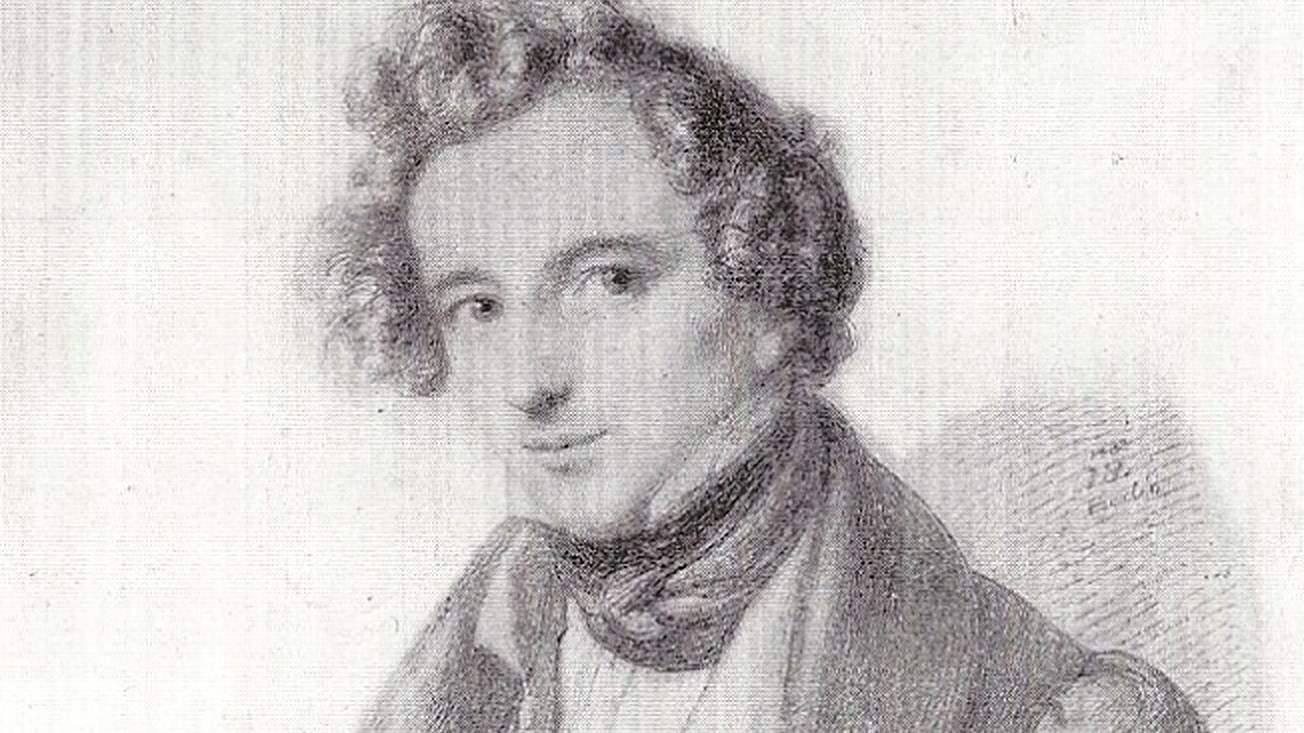The fifteen-year-old Felix Mendelssohn already had thirteen string symphonies and a number of chamber works under his belt when, in March of 1824, he completed his first symphony for full orchestra.
Mendelssohn was a classicist who built on traditions of the past. He studied, extensively, the works of Mozart and Haydn, as well as the counterpoint of J.S. Bach and Handel. Additionally, the teenage composer absorbed the influences of his contemporaries, most notably Beethoven and Carl Maria von Weber. We hear all of this in the Symphony No. 1 in C minor. Yet, most importantly, in this Symphony, Mendelssohn’s distinct musical voice comes fully into focus. A year later, he would compose the famous Octet, and the magically evocative Overture to A Midsummer Night’s Dream.
The influential monthly musical journal, The Harmonicon, documented the Symphony’s London premiere, which occurred on May 25, 1829:
… though only about one or two-and-twenty years of age, he has already produced several works of magnitude, which, if at all to be compared with the present, ought, without such additional claim, to rank him among the first composers of the age…. Fertility of invention and novelty of effect, are what first strike the hearers of M. Mendelssohn’s symphony; but at the same time, the melodiousness of its subjects, the vigour with which these are supported, the gracefulness of the slow movement, the playfulness of some parts, and the energy of others, are all felt…. The author conducted it in person, and it was received with acclamations…
From its opening bars, the first movement (Allegro di Molto) erupts with fiery, tempestuous energy. Plunging headlong into adventure, it is music filled with spirited, sweeping lines and dense contrapuntal conversations. In a thrilling weave of voices, melodic lines emerge, continuously, from unexpected places. One passage anticipates the hushed, nocturnal atmosphere of A Midsummer Night’s Dream. At the beginning of the coda section, all of the thrilling forward motion dissipates, suddenly, with two mysterious low tones in the horns. Then, the frenetic energy returns with a ferocious surge to the final cadence.
The second movement (Andante) brings an equally rich, although contrasting, drama. It begins with a tender, prayerful melody. With expansive, seemingly unending phrases, the music wanders into magical new lands. At moments, ominous shadows fall. There is a brief musical “standoff” between the strings and winds. The final moments fade into shimmering tranquility.
Set in 6/4 time, the third movement (Menuetto, Allegro molto) is a wild, spirited dance, filled with swirling lines and thundering outbursts. In a nod to Beethoven, the contrasting trio section returns to the original minuet with a sudden, added bridge, punctuated by hushed, mysterious timpani beats.
With the final movement (Allegro con fuoco), we plunge back into the thrilling C minor ferocity of the first movement. In the second theme, woodwind lines are accompanied by vibrant string pizzicati. The movement’s development section brings a vigorous and triumphant fugue. The young Mendelssohn seems to be delighting in his skill, while paying homage to the example of Bach. The coda takes a sudden, celebratory turn to C major, with blazing trumpets and timpani.
This 2014 performance features Paavo Järvi and the Frankfurt Radio Symphony Orchestra:
Five Great Recordings
- Mendelssohn: Symphony No. 1 in C minor, Op. 11, Andrés Orozco-Estrada, Tonkünstler-Orchester Niederösterreich Amazon
- Andrés Orozco-Estrada and the Frankfurt Radio Symphony Orchestra
- Christoph von Dohnanyi and the Vienna Philharmonic Amazon
- Wolfgang Sawallisch and the New Philharmonia Orchestra
- Claudio Abbado and the London Symphony Orchestra
Featured Image: A drawing of the teenage Mendelssohn (1833), Eduard Bendemann

